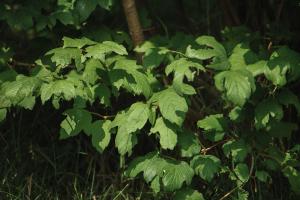Is the US Planting More Trees Than They Consume?
The United States has long been a leader in innovation, technology, and progress. However, when it comes to the environment and sustainability, there are still many questions that need to be answered. One of the most pressing issues is whether the US is planting enough trees to offset the amount they consume. This article will explore this topic and provide insights into whether the US is doing enough to protect the planet.
The Importance of Trees
Trees are essential for the survival of the planet. They absorb carbon dioxide (CO2) from the atmosphere and produce oxygen. Additionally, they provide numerous environmental benefits, such as reducing soil erosion and providing habitat for wildlife. According to the US Forest Service, forests in the US sequester nearly 14% of the total carbon emitted by the country each year. This makes trees crucial to battling climate change and protecting the environment.
Tree Planting Efforts in the US
The US has a long history of tree planting. The first Arbor Day was celebrated in Nebraska in 1872, and today it is celebrated in every state on different dates. The US Forest Service oversees the planting of millions of trees each year, and many private organizations, such as the Arbor Day Foundation, also work to increase the number of trees in the US. In 2020, the US Forest Service planted over 81 million trees, and the Arbor Day Foundation planted over 5 million. These are impressive numbers that suggest the US is making significant efforts to plant more trees.
US Deforestation Rates
Despite the planting efforts, the US still suffers from deforestation. Deforestation occurs when forests are cleared for development, agriculture, and other human activities. According to the Forest Service, the US lost 36 million trees between 2001 and 2017 due to insect infestations, disease, urbanization, and other causes. In addition to deforestation, the US also experiences degradation of forestlands due to pollution, wildfires, and climate change.
The Need for a Net-Zero Approach
While the US is planting more trees than they consume, deforestation is still happening at alarming rates around the world. A net-zero approach is necessary to combat this issue. This approach involves planting enough trees to offset the number being consumed, as well as implementing other sustainable practices to reduce CO2 emissions. A Net-Zero America study by Princeton University estimates that the US can achieve net-zero emissions by 2050 by reducing pollution, increasing renewable energy production, and addressing deforestation and agriculture-related emissions.
Conclusion
In conclusion, the US is making significant efforts to plant more trees and protect the environment. However, deforestation rates and other factors make it clear that the country needs to do more. A net-zero approach that involves balancing the number of trees being consumed with the number being planted, as well as reducing CO2 emissions, is necessary to combat climate change and protect the planet. With continued efforts and advancements in technology, the US can become a leader in sustainability and a model for other countries around the globe.

 how many times do yo...
how many times do yo... how many planted tre...
how many planted tre... how many pine trees ...
how many pine trees ... how many pecan trees...
how many pecan trees... how many plants comp...
how many plants comp... how many plants can ...
how many plants can ... how many plants and ...
how many plants and ... how many pepper plan...
how many pepper plan...




























